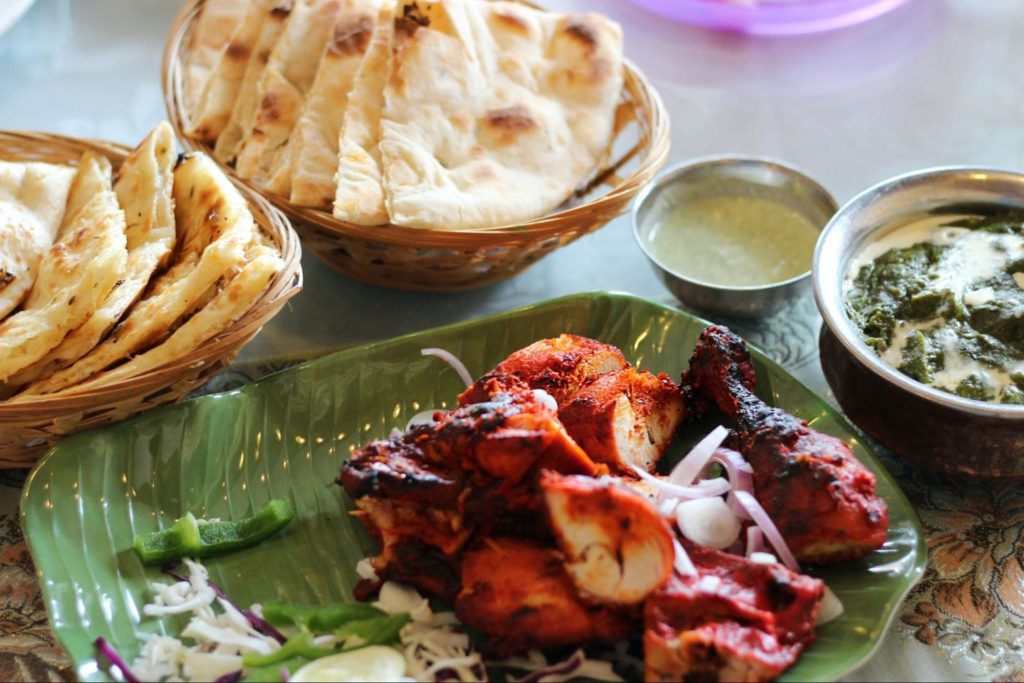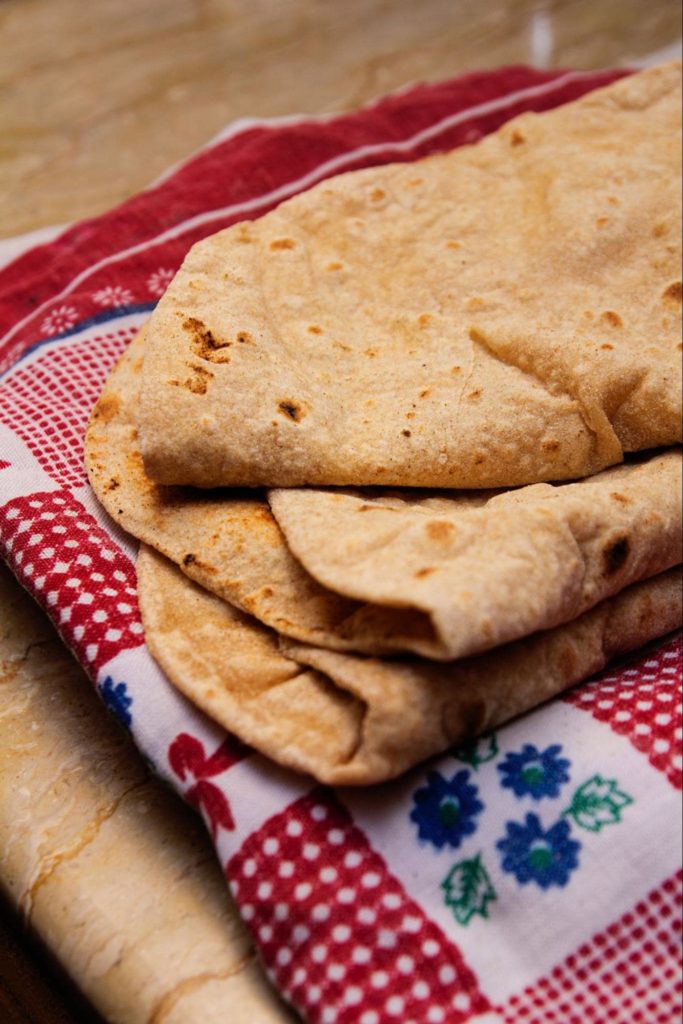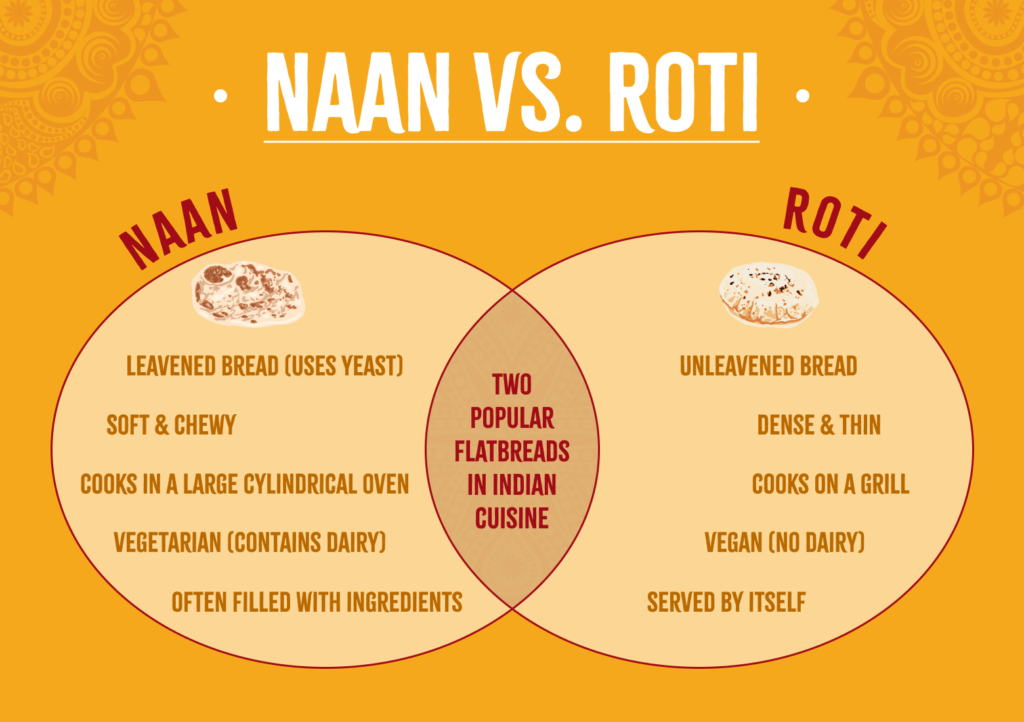Roti vs. Naan | What’s the Difference?

When it comes to roti vs. naan, what’s the difference?
Roti and naan are two classic flatbreads in Indian cuisine, but they’re often lumped together for their similar appearance.
This similarity is a misconception: these bread dishes vary in ingredients and recipes and can radically change your meal. In this article, we’ll break down the differences between roti and naan, showing you the history behind each classic bread.
We’ll also show you how to make each, keeping your kitchen work varied and your output flavorful.
Breaking Down Flatbread
Before we dive into roti vs. naan, it’s good to understand the term flatbread. We’ve all had flatbread, but what exactly does the term mean?
This bread type is common throughout the world, like South Asia and the Middle East, but is especially prevalent in India. A flatbread is bread made with flour; yogurt, milk, water; and salt before being rolled into a flattened dough.
Unleavened vs. Leavened Flatbreads
Flatbreads fall into two categories: leavened and unleavened. Don’t worry; the distinction is simple.
Simply put, leavened flatbreads contain yeast or another leavening agent, like baking powder or baking soda. Unleavened flatbreads have no leavening agents. Due to this addition, leavened bread tends to appear puffier and less dense while its counterpart runs heavier and coarser.
Pretty simple, right?
What is Roti?
Now that we know about flatbreads, we can explain why Roti and Naan are so different.
Roti (also known as Chapati) is arguably India’s most popular flatbread. This unleavened flatbread is one of the most common sides in Northern India and appears in all of India’s regions.
This bread is made by forming a dough from wheat and water and then placing it on a flat tawa (cast-iron frying pan). The specifics can vary from kitchen to kitchen! Many people love to douse their roti in rich ghee, which softens it and infuses it with waves of flavor. Others heap their roti with salt, soak it in oil, or add spices like jeera and ajwain.
Ambitious chefs can also cook roti over an open flame. This method makes the phulka version of roti, which uses steam to puff the bread like a balloon.
What is Tandoori Roti?
Roti can also be cooked in a tandoor (an oven typically used for other dishes)– giving the flatbread crisp edges and a soft center. This cooking technique is widely popular throughout India and the US, making it more similar to its flatbread cousin– naan.
Try it out for a different spin on this classic dish.

What is Naan?
On the other hand, Naan is made using all-purpose flour and whole wheat flour – or a combination of the two. Most kitchens cook naan in a tandoor (a large clay oven) and serve it immediately. Because of the ingredients and cooking style, naan has a thicker, chewier texture than roti.
The yeast and yogurt or buttermilk often used in naan also gives it a slightly tart/sour flavor, similar to a sourdough in European or American breads. Naan also uses yeast, so it is a leavened flatbread compared to roti, which doesn’t use any.
Next time you visit an Indian restaurant in the United States, notice the amount of naan on the menu. This bread is widely popular in the US for its pillowy texture. In India, you don’t typically eat naan at home–instead, it’s enjoyed dining out or for special occasions, like weddings.
Like roti, naan comes in various cooking styles, from classic plain to crispy or stuffed with fruits and nuts. We recommend eating naan alongside Northern Indian dishes like Chicken Tikka Masala or Roasted Tomato Curry with Chickpeas. The soft texture perfectly contrasts these rich, robust dishes.

Naan vs. Roti
If the differences slipped by you, we’re here to help.
Naan is a leavened bread (meaning it uses yeast), while roti is an unleavened bread (meaning it doesn’t). The different ingredients give a far different texture: naan is soft and chewy, while roti is dense and thin.
To traditionally cook these flatbreads, naan rests in a large cylindrical oven, while roti cooks over a grill. Additionally, roti can be considered a vegan flatbread, while naan’s inclusion of dairy only makes it vegetarian. Finally, many typically fill their naan with ingredients, while roti is served by itself.
Tandoori Roti vs Naan
Tandoori roti is closer to naan thanks to its similar cooking method. Though tandoori roti starts off like regular roti, it is usually more flaky and crispier because it is cooked in a tandoor oven on high heat. Just like naan, tandoori roti has a grilled flavor.
Exploring India’s Great Breads
Bread is a staple of Indian cuisine. We recommend exploring other classic Indian bread. You’ll quickly learn how widely different bread can be!
A few of the most popular bread-based meals throughout the country include:
- Parotta and Paratha
- Kulcha
- Puri (Poori) and Luchi
- Bhatura
- Appam and Dosa
- Bhakri
If you aim to try each, you’ll quickly know just how different breads can be. If you’re curious to further explore other types of flatbreads in Indian cuisine, you’ll be happy to discover our complete guide to Indian breads!
Fill Your Plate with Sukhi’s
Though dishes can look similar, Indian cuisine is full of dynamic nuances and intricacies. There’s no better way to learn the subtleties of cooking than to cook yourself!
At Sukhi’s, we’ll guide you through our favorite meals with high-quality recipes and insider blog posts. Explore our side dishes to see just how delectable our flavors can get. Our bun samosas can fill your bread craving. With a bit of practice, you’ll make delicious, robust foods in no time.
If you’re looking for simplicity, try our pre-cooked meals. From chicken vindaloo to roasted tomato curry, we have all you need to keep your kitchen in tip-top shape. We hope you continue to use us for all your culinary distinctions!
No comments yet.